-
Large-scale conspiracies would quickly reveal themselves

If you are thinking of creating a massive conspiracy, you may be better scaling back your plans, according to new research. While we can all keep a secret, a new study suggests that large groups of people sharing in a conspiracy will very quickly give themselves away.
-
-
U.S. R&D increased in 2013, ahead of the pace of gross domestic product
U.S. expenditures in research and development (R&D) rose to $456.1 billion in 2013 — a $20.7 billion increase over the previous year, according to a report from the National Science Foundation. The R&D system in the U.S. includes multiple performers, including businesses, the federal government, non-federal government, universities and colleges, and other nonprofit organizations.
-
-
It is 3 minutes to midnight -- still

The Bulletin of the Atomic Scientists yesterday announced that the minute hand of the Bulletin’s closely watched Doomsday Clock will remain at three minutes to midnight, since recent progress in the Iran nuclear agreement and the Paris climate accord “constitute only small bright spots in a darker world situation full of potential for catastrophe.” The Bulletin’s panel of security experts said that “Three minutes (to midnight) is too close. Far too close…” – but that this reflects “world leaders continue to fail to focus their efforts and the world’s attention on reducing the extreme danger posed by nuclear weapons and climate change. When we call these dangers existential, that is exactly what we mean: They threaten the very existence of civilization and therefore should be the first order of business for leaders who care about their constituents and their countries.”
-
-
Rapid, affordable energy transformation in U.S. possible
The United States could slash greenhouse gas emissions from power production by up to 78 percent below 1990 levels within fifteen years while meeting increased demand, according to a new study. The study used a sophisticated mathematical model to evaluate future cost, demand, generation, and transmission scenarios. It found that with improvements in transmission infrastructure, weather-driven renewable resources could supply most of the nation’s electricity at costs similar to today’s.
-
-
Record warm years almost certainly the result of human-made climate change
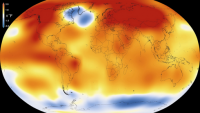
Recent record warm years are with extremely high likelihood caused by human-made climate change. Without greenhouse-gas emissions from burning coal and oil, the odds are vanishingly small that 13 out of the 15 warmest years ever measured would all have happened in the current, still young century. These odds are between 1 in 5,000 and 1 in 170,000, a new study by an international team of scientists now shows. Including the data for 2015, which came in after the study was completed, makes the odds even slimmer.
-
-
De-icing concrete to improve roadway safety
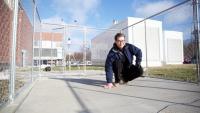
Researchers have developed a concrete which de-ices itself by adding a pinch of steel shavings and a dash of carbon particles to a traditional concrete recipe. Though the newest ingredients constitute just 20 percent of the otherwise standard concrete mixture, they conduct enough electricity to melt ice and snow in the worst winter storms while remaining safe to the touch.
-
-
Global water supply under increasing pressure
A new study projects that global demand for water could more than double by 2050, increasing pressure on already scarce water resources. “Our current water use habits increase the risk of being unable to maintain sustainable food production and economic development for the future generation,” says one researcher. Water efficiency and water saving measures could stabilize demand.
-
-
Breakthrough in continuous monitoring of CO2 leaks from carbon storage sites
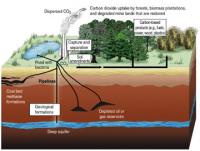
Underground storage of CO2 produced from fossil fuel burning, rather than releasing it into the atmosphere, could play an important role in suppressing climate change. Ensuring that the CO2 does not leak from the storage site is key – but the high number of surveys necessary to make sure there is no CO2 leak makes this a costly endeavor. A team of Japanese researchers may have found a means of achieving easier and lower-cost monitoring for leaks of CO2 stored in underground reservoirs.
-
-
Northeast braces for “snowpocalypse”
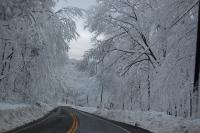
Around seventy-five million Americans are preparing for potentially life-threatening blizzard conditions as the season’s first major Atlantic Coast storm is about to sweep across the East Coast. Forecasters say the storm taking aim at Washington could rank among the biggest snowfalls on record, eclipsing the “Snowmageddon” storm of 2010 that dropped 45.2 cm. At least five states have declared emergencies as the potentially historic blizzard, which is expected to begin today (Friday), will likely dump up to 75 cm of snow in some regions.
-
-
U Wyoming could become cybersecurity hub

Wyoming Governor Matt Mead has requested state funding to develop a program at the University of Wyoming to become a center of excellence in cyber defense. According to the Wyoming Cybersecurity Education Initiative, proposed curriculum in the College of Engineering and Applied Science’s Department of Computer Science would educate students to defend against such attacks and “provide meaningful and sustainable impact to Wyoming’s technology sector through cybersecurity and information assurance higher-education programs.”
-
-
Warmer oceans could produce more powerful, destructive superstorms
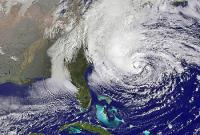
Hurricane Sandy became the second costliest hurricane to hit the United States when it blew ashore in October 2012, killing 159 people and inflicting $71 billion in damage. Informally known as a “superstorm” after it made landfall, Sandy was so destructive largely because of its unusual size and track. After moving north from the tropical waters where it spawned, Sandy turned out to sea before hooking back west, growing in size and crashing head-on into the East Coast, gaining strength when it merged with an eastbound mid-latitude storm. A new study led by the University of Maryland’s Earth System Science Interdisciplinary Center (ESSIC) suggests that a warmer Atlantic Ocean could substantially boost the destructive power of a future superstorm like Sandy.
-
-
Global ocean warming has doubled in recent decades
Changes in ocean heat storage are important because the ocean absorbs more than 90 percent of the Earth’s excess heat increase associated with global warming. Lawrence Livermore (LLNL) scientists, working with National Oceanic and Atmospheric Administration (NOAA) and university colleagues, have found that half of the global ocean heat content increase since 1865 has occurred over the past two decades. The observed ocean and atmosphere warming is a result of continuing greenhouse gas emissions.
-
-
Dead ETs: Aliens are silent because they are all extinct

Life on other planets would likely be brief and become extinct very quickly, say astrobiologists. In research aiming to understand how life might develop, the scientists realized new life would commonly die out due to runaway heating or cooling on their fledgling planets.
-
-
FBI investigates Kent State professor for ISIS connection
Julio Pino, an associate history professor at Kent State University, is currently under FBI and DHS investigation, which includes interviews with faculty members and students. Informed sources say that Pino has allegedly tried to recruit students to join ISIS.
-
-
As climate warms, Colorado high peaks lose glaciers
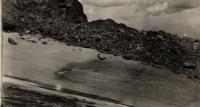
Melting of ice on Niwot Ridge and the adjacent Green Lakes Valley in the high mountains west of Boulder, Colorado, is likely to progress as climate continues to warm, scientists have found. Their study reveals declines in ice — glaciers, permafrost, subsurface ice, lake ice — in the Niwot Ridge area over the past thirty years. For glaciers like Arikaree, the time left may be counted in years, not centuries nor millennia, says one expert.
-
More headlines
The long view
New Technology is Keeping the Skies Safe
DHS S&T Baggage, Cargo, and People Screening (BCP) Program develops state-of-the-art screening solutions to help secure airspace, communities, and borders
Factories First: Winning the Drone War Before It Starts
Wars are won by factories before they are won on the battlefield,Martin C. Feldmann writes, noting that the United States lacks the manufacturing depth for the coming drone age. Rectifying this situation “will take far more than procurement tweaks,” Feldmann writes. “It demands a national-level, wartime-scale industrial mobilization.”
How Artificial General Intelligence Could Affect the Rise and Fall of Nations
Visions for potential AGI futures: A new report from RAND aims to stimulate thinking among policymakers about possible impacts of the development of artificial general intelligence (AGI) on geopolitics and the world order.
Smaller Nuclear Reactors Spark Renewed Interest in a Once-Shunned Energy Source
In the past two years, half the states have taken action to promote nuclear power, from creating nuclear task forces to integrating nuclear into long-term energy plans.
Keeping the Lights on with Nuclear Waste: Radiochemistry Transforms Nuclear Waste into Strategic Materials
How UNLV radiochemistry is pioneering the future of energy in the Southwest by salvaging strategic materials from nuclear dumps –and making it safe.
Model Predicts Long-Term Effects of Nuclear Waste on Underground Disposal Systems
The simulations matched results from an underground lab experiment in Switzerland, suggesting modeling could be used to validate the safety of nuclear disposal sites.
